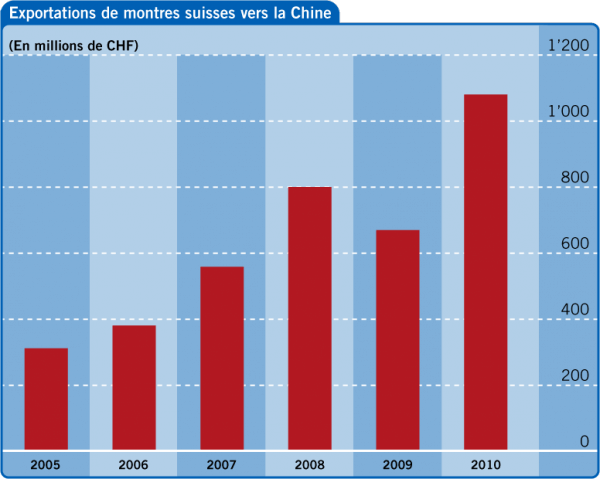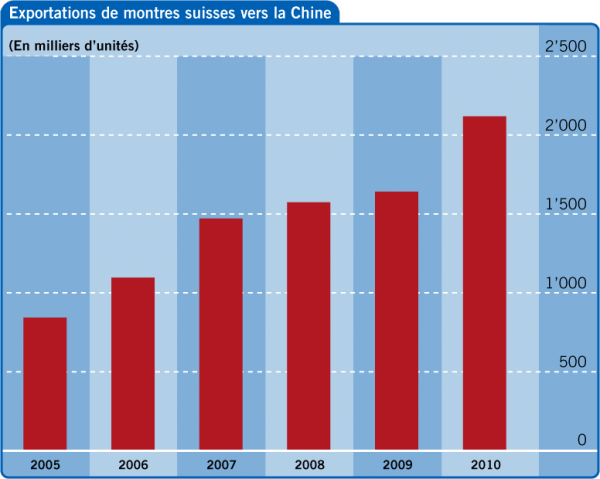BRIC, an acronym coined by Jim O’Neill, global economist at Goldman Sachs, for Brazil, Russia, India and China, the big four economic powers of tomorrow, has a magical ring for just about any business with ambitions of geographic expansion. However, the multiple realities behind what we are told are the new economic powerhouses aren’t always as sparkling as hoped. Watchmaking doesn’t escape these contrasts, even if the BRIC markets do offer incredible growth levers and tick all the right boxes for a radiant future.

China does more than keep its promises; in the space of a decade, it has evolved into a promised land with the potential to take up the slack when the economy falters elsewhere in the world. China has become the biggest growth engine for industries across every sector. And watchmakers want their share; more and more brands – Piaget, Vacheron Constantin, Tudor, Omega and Longines to name but some – are finding the pith and marrow of their growth in China. Others would simply stagnate, even lose ground, without the Middle Kingdom. As Alain Peyrefitte predicted, China has woken up.
First come, first served
Not for everyone though. Those who are just beginning to roll out their strategies could be in for a rude awakening themselves. In the meantime, they continue to talk up a potentially “stratospheric” growth lever. Yet the best spots at retailers are like gold dust; the most desirable locations and stores have become incredibly, not to say impossibly, expensive. The big cities are awash with a myriad brands’ stores. Now level two to four towns are developing along similar lines, prompting watchmakers to invent seventh and even eighth zones, akin to mirages in the desert. Thus a headstart could prove to be a crucial advantage, particularly as point-of-sale profitability in China has to be calculated over the long term.
The fact remains that Asia, thanks to China, is now the biggest market for Swiss watch firms. In 2010, it swallowed up CHF 8.5 billion in Swiss timepieces or 52.6%. Gaining 34.6% on 2009, Asia also posted the strongest growth. However, switch from value to volume and Asia accounts for just 38.6% of exports. In other words, customers in this part of the world purchased the most expensive timepieces. With an average export price of almost CHF 800 (CHF 580 all regions taken together), Asia is positioned well ahead of the other markets. China by itself, the fourth biggest market for Swiss watch exports in 2010, was also the fastest-growing. It gained 57% in value terms compared with 2009, outperforming its pre-crisis level by 18% to break through the one billion Swiss Francs barrier for the first time. Yet despite such exponential figures, some could find themselves with egg on their face as, when it comes to distribution, most of the cake has been cut and served.

How China has changed Swiss watchmaking
China has changed the face of the horological world to the point that, were it to sneeze, the rest of the markets would find it hard to prevent the cold from spreading. Indeed, China forms a club with Hong Kong, and with Taiwan and Macao. This former British colony is a hub for re-exports of watches into China and the foremost destination for Swiss watches. Chinese tourists descend in droves on its tax-free stores, where prices can be slashed by up to 60% compared with the mainland, according to calculations by Rolf Schnyder, CEO and owner of Ulysse Nardin who recently passed away. In 2010, Swiss watch exports to Hong Kong surged 46.9% in value terms, leaving 2008’s record levels in a cloud of dust.
But beware! Certain observers are warning against a possible overheating economy and the risk of inflation. Fingers are also being pointed at the country’s belated monetary tightening and the undervalued yuan. Despite this, Luc Perramond, at the head of La Montre Hermès, anticipates that China will continue to grow for at least another twenty years. Further proof, were it needed, of the country’s clout comes from the Swatch Group, which has gone as far as to open a watchmaking school there. Says Juan-Carlos Torres, CEO Vacheron Constantin, watchmaking has yet to take the full measure of the Chinese phenomenon.







